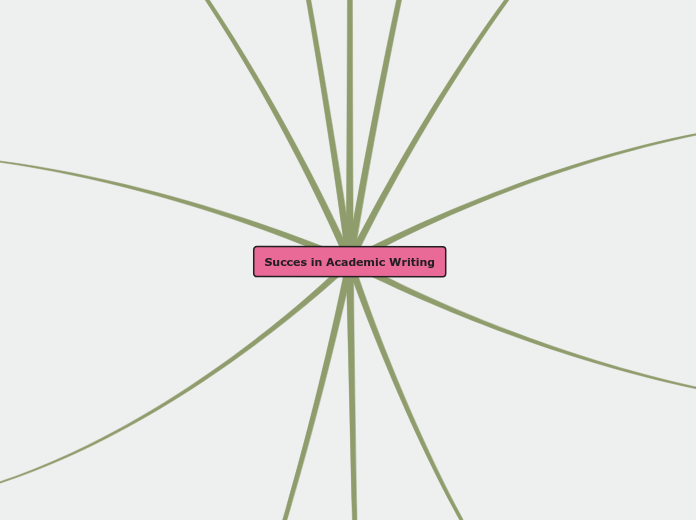Succes in Academic Writing
Moving Forward
Cycles of learning
Making the most of feedback
Where to get help
Final word
The Nature and Process in Academic Writing
Why is writing so important?
The Nature of Academic Writing
The Process of Writing
Playing to your strengths
Subtopic
Subtopic
In conclusion: the process of academic writing
Understanding the Nature of an
Assignment
The IPACE model
Putting IPACE into practice
Kinds of Writing
Questions to ask your assessor
Two ends of a spectrum
Business-style report writing
Critical reflective writing
Subtopic
Researching an Assignment
Being strategic
2 Different strategies for different assignments
Subtopic
Being selective (using RABT)
Becoming more discerning
Being a Purposeful Reader and
Note-taker
Kinds of reading
Beginning with the end in mind
Surveying (scanning and skimming)
Establishing a purpose
Deciding on a reading strategy
In-depth reading (using SP3R)
Subtopic
Annotating and note-taking
Planning and Structuring your Writing
Beginnings, middles and ends
Essays
Practical reports
Presentations
Posters
Dissertations
Planning: from large- to small-scale
Using Technology to Help You
Using your word processor’s functions (but critically)
Using bibliographic databases
Using reference management software
Creating tables and figures
Handling large documents
Reviewing and Editing Your Work
Fulfilling the brief
Subtopic
Paragraphs
Sentences
Grammar
Punctuation
Spelling
Presentation
Citing, Referencing and Avoiding
Plagiarism
Citing and referencing
Citing, referencing and academic integrity
Using citations and quotes
Plagiarism
Avoiding plagiarism
Remember, your writing is an argument – your argument
Words and Images
The role of visual elements
Content and design
Using tables
Using graphs and charts
Other kinds of figure
Composing
Balancing the critical and the creative
Composing your first draft
Writing to a prompt
Freewriting
The ‘no composing’ approach
Managing your composing
Twelve ways to overcome writer’s block
